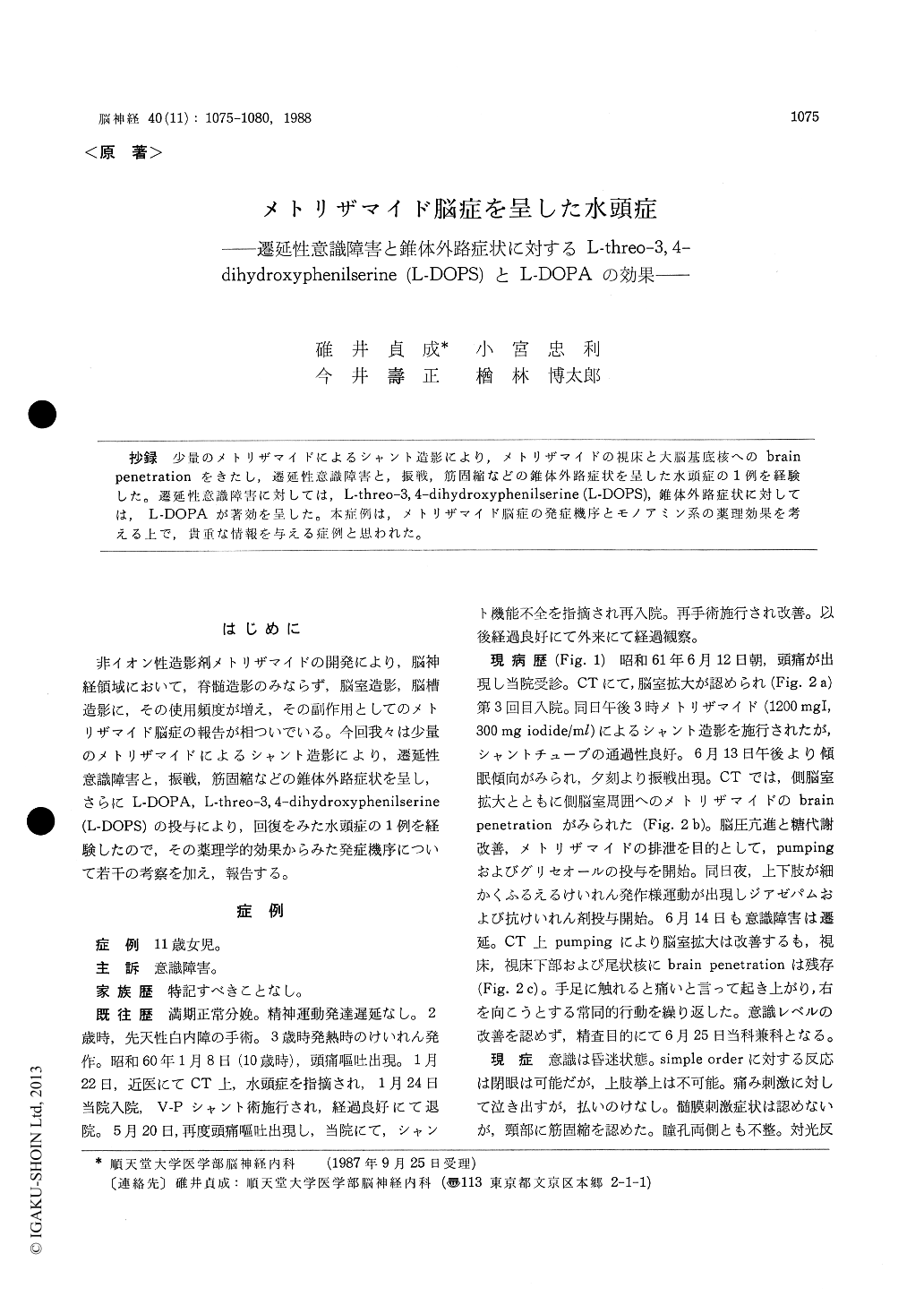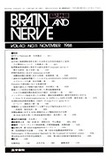Japanese
English
- 有料閲覧
- Abstract 文献概要
- 1ページ目 Look Inside
抄録 少量のメトリザマイドによるシャント造影により,メトリザマイドの視床と大脳基底核へのbrainpenetrationをきたし,遷延性意識障害と,振戦,筋固縮などの錐体外路症状を呈した水頭症の1例を経験した。遷延性意識障害に対しては,L-threo−3,4—dihydroxyphenilserine (L-DOPS),錐体外路症状に対しては,L-DOPAが著効を呈した。本症例は,メトリザマイド脳症の発症機序とモノアミン系の薬理効果を考える上で,貴重な情報を与える症例と思われた。
This report describes a case of metrizamide encephalopathy with persistent disturbance of con-sciousness and extrapyramidal symptoms. These two conditions have rarely been reported among the various adverse effects of metrizamide.
An 11-year-old girl had been in almost good health until she was ten years old, at which time she received a ventriculo-peritoneal shunt opera-tion, suffering from hydrocephalus of unknown etiology. At the age of eleven, she was admittedto our hospital due to hydrocephalus recurrence. She was examined by metrizamide shunt-gram (1200 mg iodide/4 ml). On the next day, she be-came drowsy. The CT scan disclosed the peri-ventricular penetration of metrizamide into the medial part of the thalamus and the caudate nu-cleus. Thirteen days later, disturbance of con-sciousness continued, and extrapyranidal symptoms, that is, rigo-spasticity and postural tremor, were observed. Oral administration of L-threo-DOPS, the direct precursor of noradrenaline, was effec-tive against the persistent disturbance of con-sciousness and L-DOPA was effective against the extrapyramidal symptoms. She soon recovered almost to normal and no neurological deficit re-mained. We thus conclude that the CT scan find-ings and effects of L-threo-DOPS and L-DOPA suggest that metrizamide encephalopathy in this case were respectively due to its periventricular penetration into the medial part of the thalamus and the caudate nucleus, and the resultant defi-ciency of the ascending noradrenergic reticular ac-tivating system and the nigrostriatal dopaminergic system.

Copyright © 1988, Igaku-Shoin Ltd. All rights reserved.


